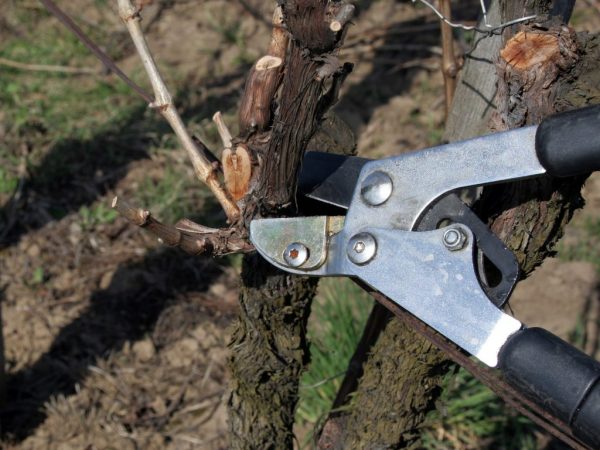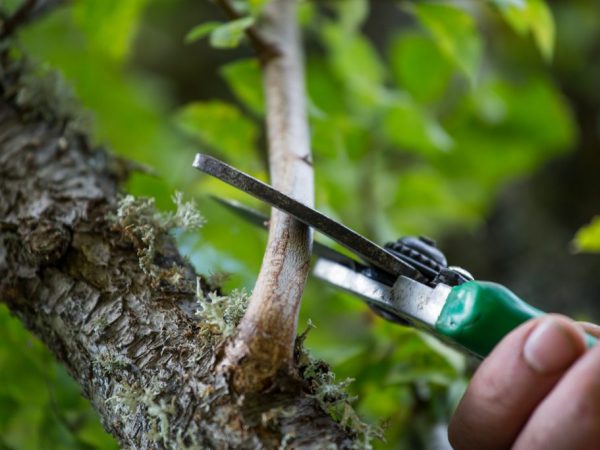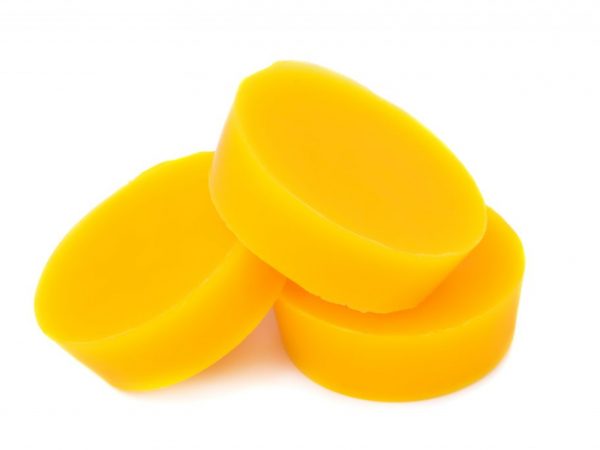How and when to prune pears
Pear pruning is an essential procedure for proper growth and good fruiting. For beginners in gardening, this process requires explanation, since it has its own characteristics and nuances. Let's take a look at how to properly prune a pear in autumn, summer and spring - basic rules, techniques and recommendations.

Pear pruning rules
Why is it needed
Pruning of young pears is done so that the tree is formed correctly and proportionally. Its subsequent growth and yield directly depends on this. Pruning a pear tree allows you to regulate the flow of nutrients that come from the roots, directing them not only to the growth of greenery, but also to the cultivation of quality fruits. (A nice bonus of proper pruning of pears - pears on trees become not only larger, but also sweeter.)
By pruning an old pear, you can rejuvenate, and from a dense tree, you can relieve unnecessary stress. In addition, pears are pruned for sanitary purposes - dried and disease-damaged branches are removed. By shaping and thinning the crown, we provide the plant with access to sunlight and do not allow it to shade adjacent crops on the site. It is also important that the pruning of the pear and its correct shaping facilitate the process of care and harvesting.
If circumcision is neglected
Pruning and shaping the pear is a care that should not be neglected. A tree quickly falls into disrepair if its crown is not thinned out in due time, and its branches are not shortened. If young pears are not pruned within two to three years, they begin to grow poorly and may even die, and mature trees cannot produce a good harvest.
In the spring
Spring pruning of pears is done before the buds awaken and the juices begin to move. At this time, the air temperature should reach 5 ° C, and night frosts should stop. The pruning of pear seedlings begins at the age of one year - it consists in pruning the top by a quarter of the tree's length and in the cut of the branches “to the first bud”. The recommended height of annual seedlings after cutting is 50-60 cm from ground level.
Young trees
The main scheme for pruning a young pear is as follows. The tree should have a trunk - a guide located in the center. If a plant does not have such a branch, it must be created by choosing a suitable branch for the role of a conductor and eliminating "competitors". Skeletal branches should be subordinate to the conductor - grow below it and, preferably, at an approximately equal level with each other.
The step-by-step instructions for pruning a pear are as follows:
- We begin cutting a two-year or three-year-old pear by shortening the guide trunk by 1/4 of the length.
- Correct pruning of pears in spring should aim at creating a strong "skeleton" of the tree, capable of withstanding the load of semi-skeletal branches, leaves and fruits in the future.To do this, we leave 4-5 branches on the trunk, located in a circle - they will serve to create a "skeleton", the rest - we delete.
- In order for the skeletal branches of biennial plants to thicken in the future, we carefully shorten them, directing them in different directions.
- To obtain a strong sprawling tree, we give the branches a horizontal position, bending them down and securing them.
- When shoots of the second order appear on a young tree, we cut off those of them that interfere with skeletal branches or grow towards the inside of the crown.
Mature trees
Spring pruning of an adult pear has its own characteristics.
It is believed that the crown of a five-year-old pear is already largely formed, and the growth of young shoots from year to year begins to decrease. In this regard, the intensity of pruning of an adult pear in the spring is significantly reduced.
As necessary, we get rid of small stem processes, tops, branches located at sharp angles, as well as those that are parallel to the conductor.
Old trees

Pruning will rejuvenate the tree
Pruning old plants is called rejuvenating - it helps the tree grow new fruit branches. The main part of the work consists in removing old branches: dead, affected, sterile, crooked, broken, crossed or growing into the crown. A more global approach is to remove the upper part of the crown, for which the trunk is significantly shortened (but not more than half). When pruning an old plant, it is also advisable to remove young branches that grow upwards parallel to the trunk.
In autumn
The scheme for pruning pears in autumn is somewhat different from the spring procedure. Since the end of August, the movement of sap in trees has slowed down, but there has not yet been a complete stop. In this regard, the tree will try to tighten the cuts, spending on this reserves in store for the winter. In order for the plant to have enough nutrients in winter, autumn pruning should be very gentle.
First of all, pruning pears in the fall is aimed at removing dry and damaged branches.
It is also recommended to prune branches that grow at right angles. For branches that interfere with the development of fruit shoots, the scheme for autumn pruning of pears is as follows: you need to cut them partially - shorten, and remove the second part next spring. Since the autumn pruning of pears often frees the tree from diseased and affected branches, it is not recommended to leave them on the site so as not to spread the infection (it is better to burn them right away).
In summer
Pruning pears in summer is basically the procedure for pinching new shoots.
Most often, summer pinching is carried out manually - with nails, and if necessary, use a pruner to remove the entire shoot.
We pinch the green part of the extra shoots with our nails, thereby stopping their growth and directing nutrients to more pressing needs. The first summer pinching is done in June, and then it is repeated every decade, since new shoots grow back rather quickly.
It should be remembered that the pruning of pears in the fall and spring is greatly simplified thanks to the summer pinching. By pinching the shoots, we do not give unnecessary branches to gain strength, as a result of which there is no need to prune them in the future. Also, in the summer, you can remove damaged and diseased branches, if necessary.
Necessary funds
For spring and autumn pruning of pear trees, you will need special tools. When cutting twigs a couple of centimeters in diameter, gardeners use pruners or special garden knives. For novice gardeners, the use of a pruner is recommended, since it is somewhat more difficult to wield a knife. Also, garden knives are used to smooth out gnarled cuts (along with scrapers and metal brushes).
If the diameter of the branch is 3-4 cm, it will be convenient to use a lopper. In addition, to properly prune the pear, you must have a garden saw - you can use it to remove thicker branches.An ordinary saw will not work in this case - you need a special garden saw. All instruments must be well sharpened and sterilized. For the processing of cuts, we always use a garden variety - purchased or prepared at home.
Garden var
This tool promotes the speedy healing of slices, prevents infection and leakage of juices. It is not applied immediately, but after stripping and drying the cut. For application, use a wooden spatula or brush.
Lukewarm

You can prepare the mixture yourself
This type of var must be warmed up before use. Popular recipes include a mixture based on beeswax, rosin, and animal fat. All components are taken in equal proportions and melted in separate containers, and then mixed thoroughly and allowed to cool. The resulting mixture is poured into cold water, and after folding, it is pulled out and crushed into a ball.
Cold resistant
This variety includes mixtures that contain alcohol. For cooking, take coniferous resin, wax and wine alcohol in a ratio of 10: 1: 1. The wax and resin are heated in a metal container until melted, stirred and allowed to cool. Then wine alcohol is added to the warm mixture and stirred. Apply the mixture with a brush.
Equipment
When performing formative circumcision, consider the following rules. When shortening a branch, you should not cut it too high above the bud - this often leads to the death of the tip. Cutting too close to the kidney can interfere with further growth. Do not make too sharp cuts, which subsequently lead to cracking of the bark and wood. The optimal cut is made at a distance of a couple of millimeters above the kidney at an angle of 45 °.
How to properly prune a pear branch completely? The recommended method is called “under the ring”. It consists in cutting the branch to the base, without leaving "stumps" - the annular influx located at the base of the growth serves as a reference point. You need to cut the pear branch at an angle a couple of millimeters above the annular bead, but not along the ring itself, otherwise the cut will take a long time.
For thick branches
The peculiarities of pruning pears with thick branches requires a special garden saw. Before sawing from above, the twig must be sawed from the bottom. If the bottom notch is not taken care of, the branch can break under its own weight, damaging the bark and wood.
The form
When pruning the crown of a pear, it is usually advised to stick to a pyramidal shape - such a tree is compact and can withstand a large load of fruits. There are many subspecies of the pyramidal shape, which allows the gardener to better take into account the individual characteristics of the plant and site, as well as his own preferences.
One of these subspecies is called "spindle" - it is a narrow pyramidal shape, very convenient for creating dense garden plantings (in turn, the "spindle" shape also has several varieties: German, French, free, slender, etc.).
The "cordon" form is recommended to be used if the tree grows near a fence or a low fence. Most often, it is a columnar trunk, from which branches of forty centimeters extend, but it can also have a different configuration. A very interesting form is the "palmette" - it is created in one plane and is often used for planting against a wall or path. A dwarf pyramid is made for a tree grafted onto an appropriate stock, usually on a quince. Such a plant is very compact, and also convenient in the care and collection of fruits.
Recommendations
- Pruning young pears in spring should not be combined in time with the procedure for applying nitrogen fertilizers. Having exhausted the reserves of nutrients in winter, the tree tries to replenish them faster and intensively absorbs everything that the earth gives. At the same time, excess nitrogen negatively affects the taste of the fruit, reducing the quality and usefulness of the crop.
- It is not recommended to prune trees in winter - the cuts do not heal well at low temperatures, due to which the frozen branches may even die (this applies even to frost-resistant varieties, such as the Kyrgyz winter, etc.). It should be remembered that the winter procedure is less dangerous for old trees than for young ones - sometimes in the southern regions, rejuvenating pruning of pears is done after major frosts at the end of winter.
- Many gardeners recommend pruning and planting a seedling. After transplanting, the tree works for some time to restore the roots, and therefore it is better to cut off or shorten the extra branches on it (so that at this time the forces of the seedling are spent on the growth of roots, and not branches).
- Some gardeners use varnish, salidol, petroleum jelly and other chemicals instead of garden varnish (or in its composition), but this approach is not always safe for the tree. With an excess of chemical components, the wound does not heal for a long time, and in some cases the plant may even get burned.
- Astrologers do not recommend cutting the branches of plants for the growing moon - during this period, the juices rise up, which is why it takes a lot of time and effort to heal the slices. The best time for this procedure is the days of the waning moon, ideally the fourth quarter.


